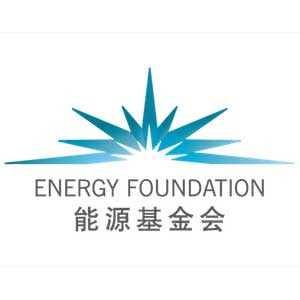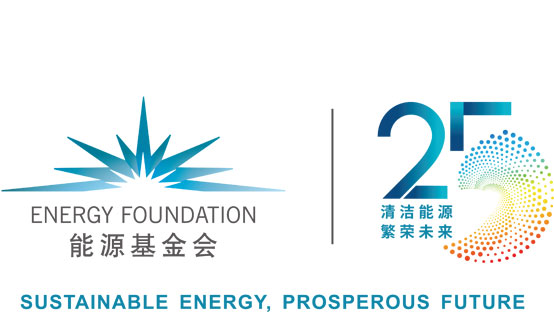The Low-carbon Transformation of the Chinese Economy (Part 4)
Low-carbon development is not an abstract concept in a world beset with extreme weather events brought about by climate change. It comes into being against a specific socio-economic background: being at a certain socio-economic development stage, endowed with a certain amount of energy resources and a required level of technological development and innovation. And there must be a high level of social awareness of related issues. In essence, it’s about a development model that maximizes carbon productivity, after taking into consideration of value judgment and institutional capacity. And proper institutional arrangement has a prominent role in achieving the goal of low-carbon development and transformation.
The Chinese government has stated, in order to build an ecological civilization, it’s necessary to establish a comprehensive institutional framework and reply on institutional guarantees to protect the environment. It has also proposed a system that includes prevention at the source, control over the process, compensation for any damage, and genuine accountability. The country must take concrete action in setting up key institutions over property right of natural resources and assets and control on their usage, ecological red lines, compensation for ecological protection, and related management system. Only by establishing these key systems can we provide important institutionalized guarantees for low-carbon development.
On this basis, China must continue to improve relevant laws and standards, and begin to explore for ways to integrate its responses to climate change into the country’s existing environmental laws and governance system. It also needs to establish an appropriate system for allocating targets and responsibility for reducing GHG emissions. All of these needs to be completed in the context of the transfer of government responsibility on climate change from the National Development and Reform Commission to the Ministry of Ecology and Environment.
On the one hand, we need to build a national market for carbon emission trading for industries with high concentration ratio, such as electricity, steel, cement, petrochemicals, etc., so that targets/quotas can be distributed to enterprises mainly through auction, with carbon trading carried out between themselves. At the same time, it’s also necessary to explore the possibility of imposing a carbon tax on relatively dispersed carbon sources based on environmental tax law, in order for market to play a decisive role in the allocation of resources.
On the other hand, China should fully absorb the experiences of the EU in its operation of the carbon market, and focus on the coordination of the market with emission reduction targets, responsibility system, and energy efficiency and renewable energy policies that are outside of the coverage of the emission trading system. Another important task for the country is to coordinate low-carbon development policies and actions at national, provincial, city, and industrial sector levels, such as carving up energy-saving and emission reduction targets related to urban transportation, construction, and other sectors and assign them to individual cities. And then, municipal governments can use urban planning, construction and operation of municipal infrastructure, and related local policies to facilitate the achievement of such emission reduction targets.
To this end, it’s necessary to reform the current way of simply dividing national control targets into provincial targets. A major problem with this practice is the misplacement of responsibility. In the end, the responsibility for emission control should be placed upon those enterprises, which are large emitters, especially the ones within high concentration-ratio industries such as power, petrochemicals, and ferrous metallurgy.
At present, the government’s Energy Saving and Low Carbon Action Plan for 10,000 Enterprises covers about 20,000 to 30,000 large enterprises, with their emissions accounting for a sizable chunk of the total. The goal is to divide the national control targets into specific targets for industries and then directly assigning them to large enterprises within them through emission permits etc., so as to clarify company responsibility over their share in emission control. Thereby, the enterprises involved can be prodded, managed, and evaluated through economic means, such as fiscal stimulants and taxes or emissions trading. The core responsibility of the local government is to turn into good referees and supervise these companies that are responsible for emission control. However, under the current system, a local government has become both a referee and an athlete, leading to a misplacement of responsibility. In practice, local governments either use administrative means to compel enterprises under its jurisdiction with a total disregard to costs involved, or collude with enterprises to “adjust” emissions data, in order to meet targets.
The central government’s assessment of the local government performances should be mostly based on how they perform their supervisory function and whether they are “good referees” or “corrupt referees,” instead of the fact whether they met targets on emission control. If it is absolutely necessary to assess local governments over targets, they should only be assessed on their performances over construction and transportation sectors, which are heavily impacted by official planning and operation of public facilities in urban areas.
Within the institutional framework of low-carbon development, GHG data collection, monitoring, and verification, and GHG target responsibility evaluation are two basic parts. The statistics and accounting system needs to incorporate the basic statistical indicators of GHG emissions into the official system of statistical index based on the existing statistical infrastructure. And it’s necessary to compile a GHG emission inventory, and gradually establish and improve a basic statistical system that is compatible with the compilation of GHG inventory. In addition, we need to establish and fine-tune the basic statistical reporting system for GHG emissions of key enterprises and local governments at all levels, and gradually improve the basic statistics in this area, refine and increase the number of indicators of energy statistics, modify and improve the energy balance sheet, and improve energy statistics for enterprises in industry, construction, transportation and service sectors, and public institutions. For the responsibility assessment system on GHG emission target, we should gradually incorporate the assessment subjects’ performances over low-carbon targets into the comprehensive assessment of socioeconomic development at various departments and cadre evaluation system according to the requirements of the latest official performance assessment rules. And this aspect should be an important yardstick for the performance evaluation of government departments and leading officials at all levels. At present, the most direct approach is to integrate the assessment of local government’s performance over binding targets on carbon intensity into the scope of environmental protection supervision.
In the field of environmental economics, there has been a long-standing debate between supporters of the Coase solution (emissions trade) and the Pigou solution (environmental tax), with regard to a market-based policy approach that utilizes effective control based on total social expenditure. Currently, among China’s policymakers, the mainstream choice is to push forward with an emission trading system. The authors believe that in order to achieve the aforementioned plan on technology, the low-carbon policy roadmap should be a “three-step” strategic deployment in near, medium, and long-term.
The first step is to build capacity and prepare the conditions, that are required regardless of the policy options chosen, in the fields of law, statistics and accounting, and institution arrangement related to social credit etc. This capacity building process may take 5 to 10 years or even longer. The second step is to focus on fiscal and tax policies, in order to rapidly promote China’s low-carbon economic transformation. At the same time, the country needs to lay the groundwork for the third step (policy tools enabling the clarification of property rights of emission and the trading of emission rights) through pilot programs and other means. One of the reasons to focus on fiscal and tax policy in the near and medium term is that it will necessarily take a long process before carbon market is ready to play a significant role in China. The other reason is that fiscal tools and taxation can have a more visible and substantial impact under existing conditions in the country. And they are relatively easy to implement. However, the use of fiscal tools and taxation is in no way simply about subsidies and taxes. It’s more about adjusting prices of factors of production, with the aim of achieving structural adjustment of taxes on the use of the factors without increasing the overall tax burden of enterprises. The basic conceptual consideration here is to hike taxes on damages to environmental quality and uses of energy and resources which are increasingly scarce, and to control or even reduce mandatory “employment tax” (such as compulsory social security) on labor, a factor of production which is relatively in ample supply. Then, through transfer payment as part of fiscal policy, environmental tax (carbon tax) collected should be paid to social security fund to make up for a shortfall caused by a reduction of “employment tax” on enterprises.
Aside from the option of limiting or even reducing the “employment tax” on enterprises, we should also consider about adjusting taxation structure and balancing tax burden for enterprises through a reform of value-added tax. This means, while China speed up the construction of its national carbon market, it should also seek a gradual introduction of a comprehensive system of environmental taxation for carbon dioxide and local pollution, in the context of the country’s tax reform. Specifically, we need to roll out progressive carbon tax items of small-amounts in those sectors that have low concentration ratio and high transaction costs, and are not suitable for inclusion in carbon markets. The collected taxes can then be used to support things like the R&D and demonstration of low-carbon technologies.
In addition, government departments, businesses, NGOs and the public need to enhance their understanding and awareness in the low-carbon area. It’s also necessary to strengthen personnel training and institution mechanisms, enhance related R&D capabilities and government supervision, establish mechanisms for coordinating interests of departments and local regions, increase information disclosure, and establish and improve public participation and supervision. The most urgent task at the moment is to rapidly beef up local environmental bureaus in order to for them to manage climate change affairs in tandem with the reform of government institutions.
In short, it is necessary to establish a comprehensive policy framework that complements the low-carbon development process. It should cover regulation; standards; fiscal, tax, credit, capital market, and price policies; and a well-run carbon market. Finally, we should strengthen impact assessment beforehand and evaluation after policy implementation.




